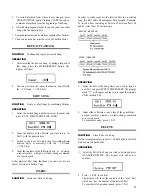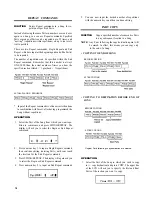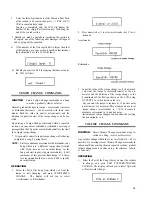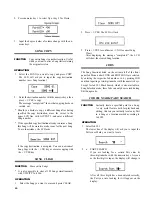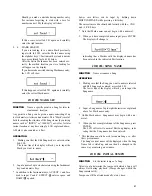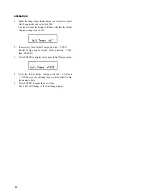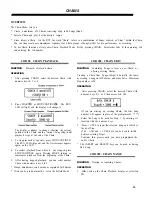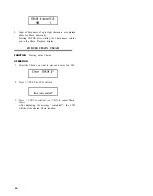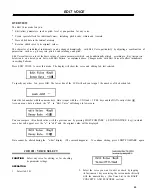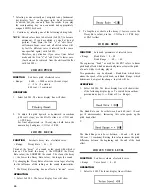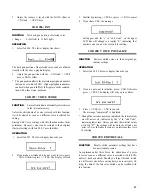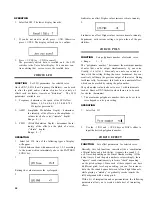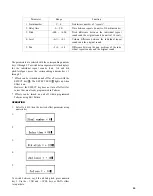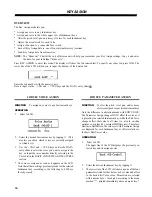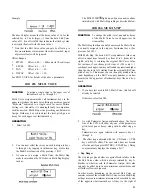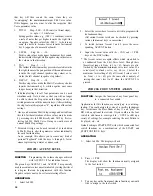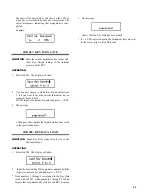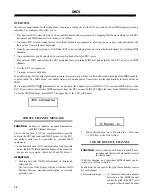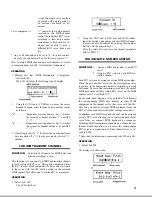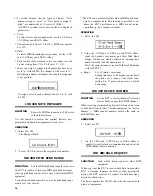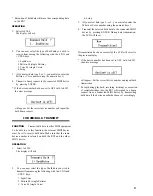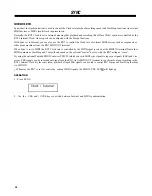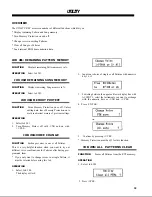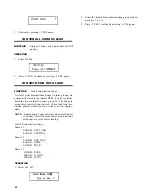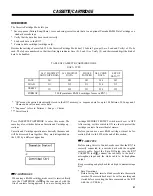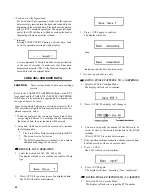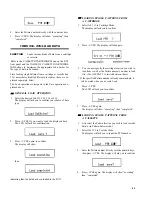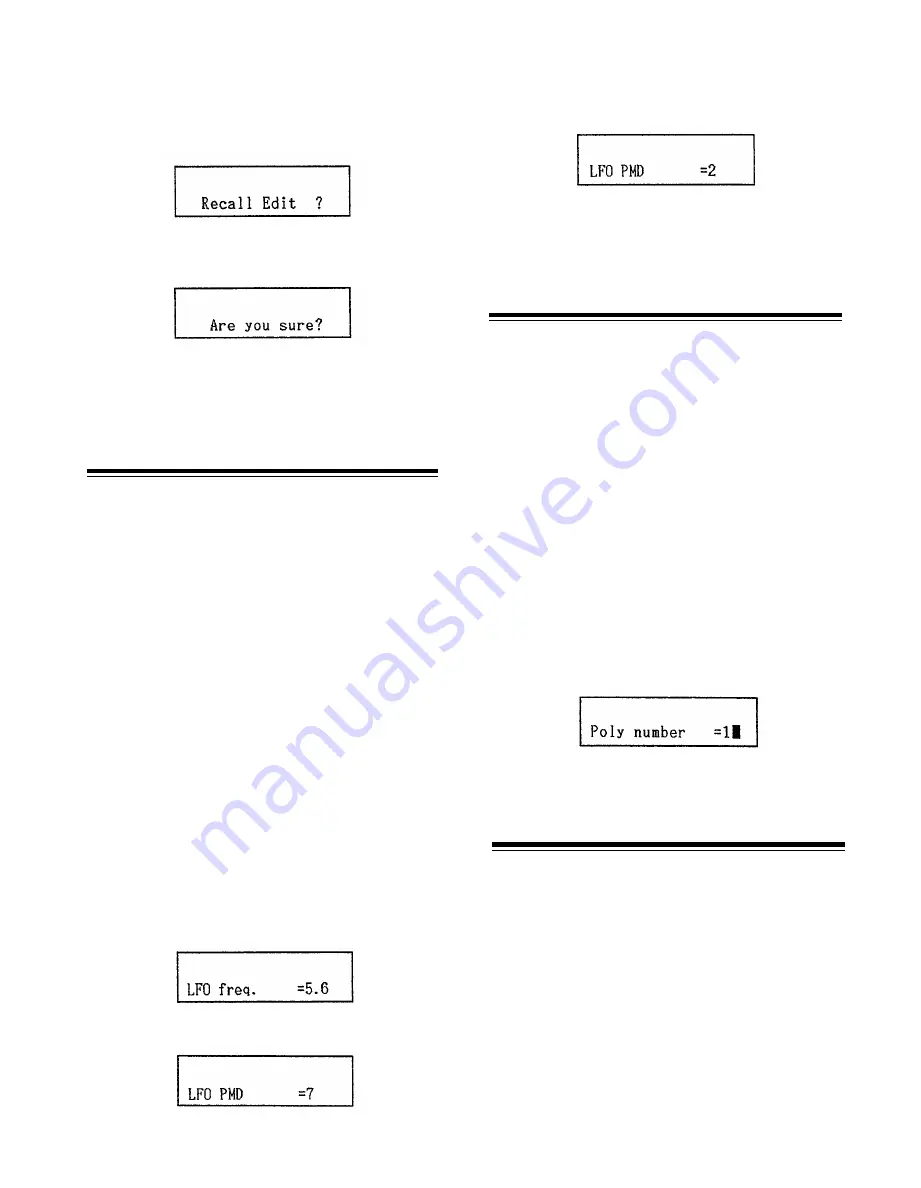
OPERATION
1. Select Job #09. The lower display line asks
2. If you do not want to recall, press - 1/NO. Otherwise
press + 1/YES. The display will ask you to confirm:
3. Pres s + 1/YES (or - 1/NO to cancel).
The previously edited data is recalled, and the LCD
switches to the Voice Select display. You can now con-
tinu e editing that voice or store the recalled data.
JOB #10: LFO
FUNCTION
Set LFO parameters for selected voice.
On th e RX7, LFOs (Low Frequency Oscillators) can be used
to alte r th e pitch and/or volume of voices for a variety of
effects such as vibrato, tremolo or “distortion”. The LFO
parameters available are
1: Frequency - determines th e speed of the LFO effect.
Values: 2.4, 5.6, 6.0, 6.4, 6.9, 9.8, 48.8, 78.1
Hz (cycles per second)
2: AMD (Amplitude Modulation Depth) - determines
the intensity of the effect on the amplitude (=
volume level) of a voice (“tremolo” depth).
Range: 0 ~ 3
3: PMD (Pitch Modulation Depth) - determines the in-
tensity of the effect on the pitch of a voice
(“vibrato” depth).
Range: 0 ~ 7
OPERATION
1. Select Job #10. One of the following types of display
will appear.
Switch between them with numeric keys 1, 2, 3 according
to the menu written immediately above the PATTERN
SONG key.
1:
Raising th e valu e increases the cycle speed.
2.
0 indicates no effect. Higher values increase vibrato intensity.
3:
0 indicates no effect. Higher values increase tremolo intensity.
Experiment with various settings to get an idea of the pos-
sibilities.
JOB #11: POLY
FUNCTION
Sets polyphonic number of selected voice.
• Range: 1 ~ 8
The “polyphonic number ” determines the maximum number
of notes that can be output simultaneously by one voice.
Usually, it is left at 1. Since only one note can sound at a
time with this setting, hitting the same Instrument key con-
secutively will damp the previous output of that voice. During
fast drum rolls, for instance, this leads to an unnatural effect,
which can be avoided by raising the poly number.
The poly number value is also set to over 1 with instruments
such as Brass or DX7-Orchestra when these are to be used
for chords (harmonies).
* The maximum polyphonic number that can be set for a
voice depends on its pan setting.
OPERATION
1. Select Job #11.
2. Use the - 1/NO and + 1/YES keys or DATA slider to
input the desired polyphonic number.
JOB #12: EFFECT
FUNCTION
Sets effect parameters for selected voice.
Basically, this Job functions somewhat like a combination
of digital delay and pitch shifter: it repeats the sound 2, 3
or 4 times, depending on the Simul Number setting. (If the
delay time is 0 and the poly number is set accordingly, these
“repeats” sound simultaneously to form a “chord” depending
on th e pitch settings.) Since each of these repeats can have
a different pitch, level or pan setting, you can, for instance,
have the the sound bounce between left and right channels
while playing a “melody”, or gradually recede towards the
left background with a rising pitch.
With a bit of imagination and experimentation, the following
parameters allow you to create a whole host of interesting
effects.
28




